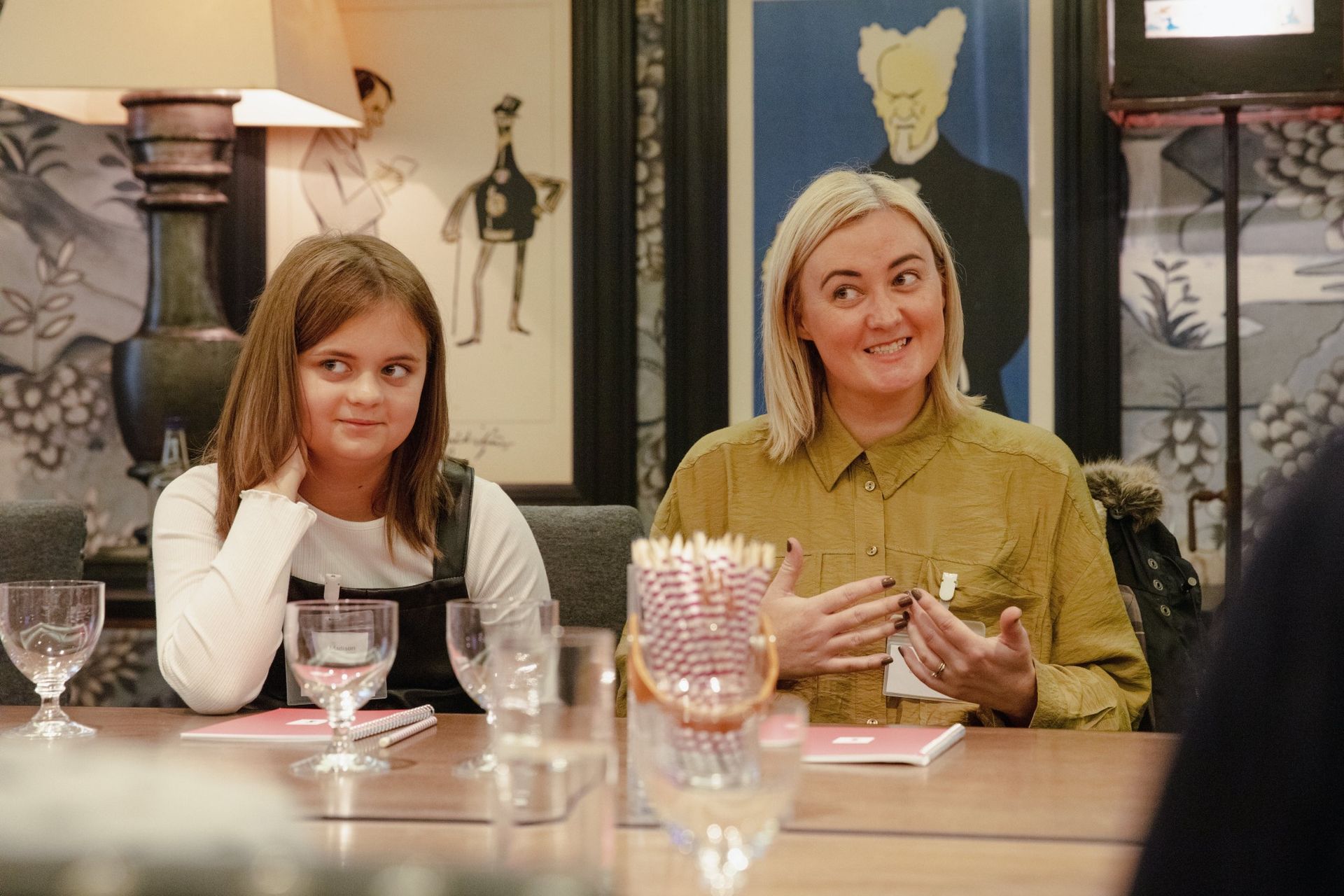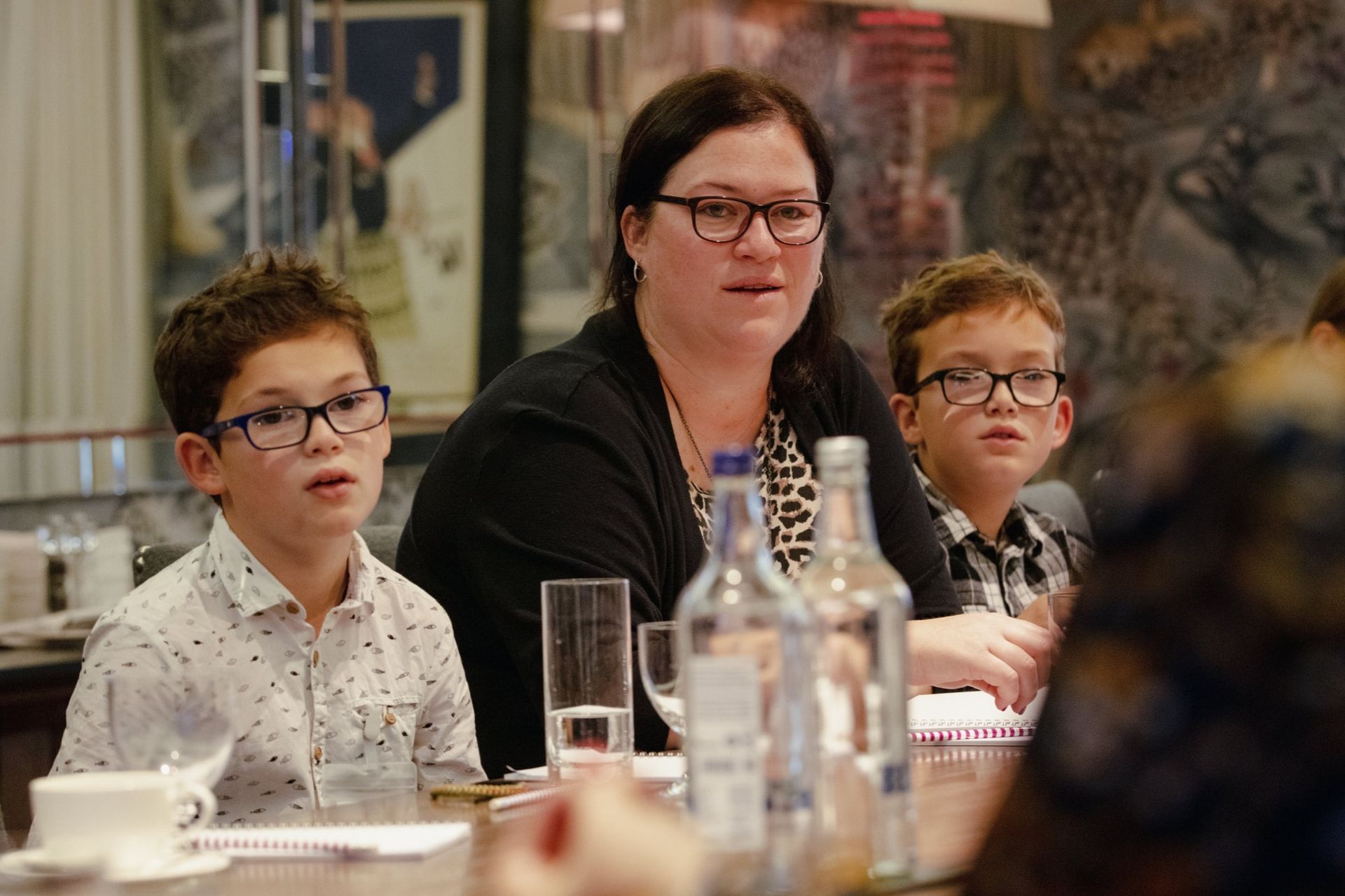This article is the latest part of the FT’s Financial Literacy and Inclusion Campaign
How much have you talked to your children about the cost of living crisis?
Our instinct as parents is to shield our children from the financial problems of the adult world, but it’s getting harder to do.
Even if your family has been able to absorb the impact of rising prices, children are picking up on news reports about soaring bills, strikes over pay and political upheaval.
While younger children might be blissfully unaware, older children may have overheard their parents fretting about mortgage rates, the weekly shop or how household budgets might need trimming.
How included should they be in these conversations? Parents don’t want children to worry, but as mortgage costs soar, even fairly affluent families are cutting treats, and don’t want children to feel this is somehow their fault.
“My 10-year-old daughter Maddie is very aware of what’s going on as she overhears us talking, but I still want her to be a kid,” says Katie Handsley, a clerical worker from Aberdeen. “As much as we’d like to give her everything in the world, it’s just not possible in the current climate. But I also want her to know we’re not being horrible when we say no; there’s a reason behind it.”
For older children, the financial pressures move beyond pocket money. Wealth managers say that falling investment values combined with cost of living pressures could affect the ability of Bomad (the Bank of Mum and Dad) to provide property deposits for adult offspring. Plus, the high cost of childcare means that Nomad (the Nursery of Mum and Dad) is increasingly being relied upon to look after the grandchildren gratis.

Pocket money
The cost of living crisis has blighted the financial lives of millions of families, and prompted children to ask many questions about money.
“Money touches every single part of our lives, and if you hide it or shelter your kids from it, you’re not going to be helping them in future,” says Louise Hill, co-founder of gohenry, a children’s savings app.
There have been clear changes in pocket money spending, according to data sourced from over 435,000 UK children using gohenry’s prepaid contactless cards.
The majority of 6 to 18-year-olds spent much less on “non-essentials” in the first half of 2022 than a year previously. Categorised by merchant, the amount children spent fell by 32 per cent on toys, 14 per cent on fashion and clothing, and 11 per cent on online gaming.
However, the number of children using their cards to spend on “essential” categories such as supermarkets increased by 17 per cent, suggesting more are using pocket money to buy food and everyday items.
The amounts that children are saving has also risen by just over 14 per cent in the same period, suggesting that more of them are targeting bigger purchases.
Michelle Dickson, a local government administrator from Weston-super-Mare, uses gohenry cards with her two sons Liam, 10, and Benjamin, 7, as a way of teaching budgeting. Her own budget has been under pressure, but she hasn’t had direct conversations with her sons about the war in Ukraine or why inflation is soaring.
“They hear a lot about the cost of living in the news and a little bit at school, but I don’t want to scare them,” she says.
“Mum’s always saying don’t leave the lights on, or don’t turn on the heating,” says Liam.
Seven-year-old Benjamin saved up for months to buy a pair of rollerblades. He was happy to buy them, but “felt sad” when he saw all the money had gone from his account.
One thing is certain — whether or not we talk to our children about the cost of living, they’re picking up how concerned we are. Nearly three-quarters of 2,000 children and teenagers surveyed by gohenry said they were worried about the cost of living crisis, including rising food and energy bills.
Nearly 8mn Britons are finding it a “heavy burden” to keep up with their bills, up from 5mn in 2020, according to the UK financial regulator. More than 4mn people have missed a bill or credit card payment in more than three of the past six months, and charities expect distress levels to increase over the winter.
Even if more affluent households have absorbed rising costs, children are aware that their friends and classmates are being affected.
Michelle says the main change for the Dickson family is no more foreign holidays. “You worry the kids will ask how come [our friends] can have a trip to Disneyland or a brand new PlayStation and we can’t?”
Katie has told her daughter that expectations for Christmas presents “need to be different this year” and the family has cut back on eating out.
“We used to get a takeaway every Saturday, but the cost for the three of us has gone from £23 to £36,” she says. Instead, she and her 10-year-old daughter have been finding recipes for “Fakeways” on TikTok, and Maddie proudly tells me about making egg fried rice with her mum: “It was so fun.”
Of the 2,000 children and teenagers surveyed, one in three said they would happily go without having treats or new toys for a month if this helped their families pay for essentials. In real life, millions of other children don’t have a choice.
One colleague recently had a heart-to-heart with his son after he found him sitting in the dark playing computer games as he was “trying to save money”.
Some parents who contacted me on social media say they don’t watch the news as they don’t want their children to have nightmares about energy blackouts, recession or the prospect of nuclear war.
Another was angry that “the 0.01 per cent of privileged kids are actually having to have it explained to them what the cost of living crisis is,” adding: “The struggle is real!”
Other parents were eager to reassure their children, but also wanted them to realise how privileged they are.
“I spend time reassuring my children about how we are coping by giving them a budget that they can decide how to spend on their own treats,” one mum says. “On Halloween night, I noticed they were very generous with the candy and satsumas they gave out as they were worried some of the other kids might not have had treats for a while.”

Financial lessons
In the classroom, children are more eager than ever to learn about money.
“What we see, particularly with younger children, is that they’re asking questions about things they’re seeing and hearing in the news,” says Rebekah Young, senior fundraising manager at MyBnk, a financial education charity.
‘What is inflation?’ is a common question she hears; but since the “mini” Budget, even year 7 children have been quizzing her about tax and national insurance.
“Children are trying to draw connections between what they’re seeing in the news, and what these things actually mean for them,” she says. “It’s important to have conversations when you’re going around the supermarket making purchasing decisions, and how to tell the difference between a want and a need.”
Sixteen-year-old Lucy Roche from Dublin has learned a lot about inflation at college, as she’s studying business — but she’s aware most of her friends know nothing. “It didn’t feel too relevant when we first learned about it, but now it’s coming in handy,” she says.
She and her friends have noticed how clothes prices are rising fast, but are using apps such as Depop and Etsy to buy and sell clothing. “There are no careless purchases now,” she says.
Others say they are encouraging their children to watch the news, and using this to start conversations about money.
“My nine-year-old daughter has really got involved with the news, and understands about the effects the war in Ukraine is having,” says FT reader Dija Ayodele.
“I run a business, and it really hit home for her when I had to make staff redundant — she saw a clear link then. My husband has schooled her on the electricity bill and she’s now the smart meter monitor.”
Michelle’s two sons are both keen footballers, which means football boots are an expensive necessity — although they cancelled their subscription to Match of the Day magazine after the price increased. “We use Vinted and eBay to buy secondhand football boots, and the boys sell their old ones too,” she says.
Liam tells me he’s been shopping around online for bargains. “I recently bought a magnet pen for £5, but the first one I saw was £15,” he says.
Does he know the difference between a “want” and a “need”?
“A need is spending money on electricity, broadband and clothing — but not fancy, branded clothing,” he says.
And what’s a luxury? “Espresso pods,” he says. “No, those are definitely a need!” says his mum. Even so, she’s saving money buying dented and less-than-perfect pods via the Odd Coffee Company.
Just giving
All the parents who contributed to this article recognise that, while they have to cut back, many others are in a far worse position.
Many are actively involving their children when making donations to food banks. In the words of one of my social media followers: “My nine-year-old is not being brought up in a bubble.”
A significant shift in children’s spending is charity donations. Amounts given to charity by children using gohenry accounts increased by an astonishing 256 per cent in the first half of 2022 with over £435,000 given to good causes compared with £120,000 the year previously.
“When I first saw this data, my instant reaction was that can’t be right, but it is,” says Hill, noting that the figure includes direct donations to charities as well as websites such as JustGiving.com and Change.org.
“It just shows you that children are not only aware of the cost of living crisis, they want to do something about it,” she says.
Such donations also rose early in the pandemic, but less dramatically. “Customers told us their children realised there were a lot of people out there in worse situations than they were,” she says. “I think we’re seeing the same sentiment here, but on a much greater scale than before.”
For every family prepared to talk to their children about budgeting, there are others desperately hiding the fact that they can’t afford to pay bills. Young from MyBnk encountered one child at a school session who asked “My mum says she’s £500 into her overdraft — what does that mean?”
Parents believe it shouldn’t just be their job to explain and argue that lessons about money should be on the curriculum in primary and secondary schools. As they navigate the cost of living crisis, they also wish they had been taught more in school.
“Knowing the value of money is really, really important,” says Young. “These are complex skills, and to be picking up that knowledge at such a young age is going to be hugely beneficial going forwards. But it’s also a worry because not every child will have that opportunity.”
Adult children tap the Bank of Mum and Dad
As living costs rise, wealth managers say there is increasing evidence that young adults are turning to parents for help.
“Our financial planners aren’t seeing evidence of parents holding back from helping their children out — quite the opposite, in fact,” says Jason Hollands, managing director of Evelyn Partners, a wealth manager.
Some well-off parents have withdrawn investment capital to pay down their children’s mortgages as interest rates rise, while others are making monthly cash gifts from income to assist adult children with the rising cost of living.
This could involve picking up regular direct costs on behalf of adult children such as vehicle payments, school fees and, increasingly, childcare.
Hollands reports that Nomad — the Nursery of Mum and Dad — is doing brisk business. “Many grandparents may be happy to care for their grandchildren for free, reducing the cost of paying for nursery or childminder costs and enabling a son or daughter to work more hours and improve their household earnings,” he says.
“Not everyone is going to be in this situation — with markets down since the start of the year and living costs rising, doubt about the robustness of their finances is going to creep in,” he adds.
With the inheritance tax nil rate band frozen until 2026, more families are eager to make lifetime gifts and start the seven-year clock ticking, fearing the freeze could be extended. However, these decisions are being weighed against the fall in value of investment portfolios and its impact on retirement plans.
“Future tax rises and rising social care costs are definitely another worry in clients’ minds,” says Andrew Wheeler, head of partnership business development at RBC Brewin Dolphin, a wealth manager. “Some people may feel they can’t be as generous as they could be.”
He also knows of parents supporting adult children with mortgage and rental costs as prices rise. “We’re not into full-blown recession yet,” he says. “If it all goes south, never mind the Bank of Mum and Dad — they’ll be coming back to live in the Hotel of Mum and Dad.”
